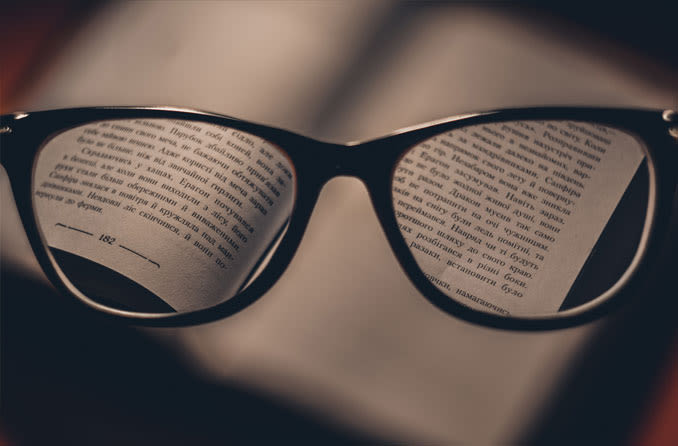Reading glasses power: How to choose strength

Even if you've had perfect vision most of your life, there will come a time after age 40 when you will need reading glasses.
As unfortunate as this sounds, it's absolutely normal and happens to all of us. This need for reading glasses is caused by age-related changes in the lens inside the eye, which make it more difficult to focus on small print or close-up objects. The technical term for this change is presbyopia.
If you’ve never needed prescription eyeglasses for vision problems like short sightedness, long sightedness, and/or astigmatism, it's likely you will be able to see acceptably well with non-prescription reading glasses.
You can purchase these "readers" at many supermarkets and chemists once you notice symptoms of presbyopia.
Generally speaking, most people begin having problems seeing small print sometime after age 40 and these problems gradually worsen with age. Also, you may notice your eyes feel tired more quickly when reading. You may even start to get headaches when reading or using a computer extensively.
Due to the progressive nature of presbyopia, people in their 40s tend to do best with low power reading glasses and people in their 60's tend to do best with high power reading glasses.
After age 60, the optimum reading glasses power tends to remain constant, depending on the type of near vision task you are performing.
Non-prescription reading glasses usually range in power from +0.75 dioptre to +3.00 dioptres (D). Both lenses have the same power, which usually is indicated with a removal sticker on the lenses and/or a permanent marking on the inside of the frame.
Sometimes, a reading glasses power chart by age — like the one on this page — is displayed with reading glasses to help you choose the reading glasses power most likely to suit your needs.
These charts typically assume you will be using the glasses to read normal-size print held at a distance of approximately 14 to 16 inches from your eyes.
Keep in mind, though, that the lens powers on a chart like this are just a starting point. The best reading glasses power for your needs depends on more factors than just your age alone.
For example, if you will be wearing the reading glasses primarily when using a computer, you may want to choose a lower reading glasses power. This is because most people view their screen from a greater distance from their eyes than when they are reading a book or magazine.
The longer the viewing distance, the less lens power is needed for comfortable vision.
On the other hand, if you need reading glasses for looking at something very close or very small (such as trimming your fingernails or removing a splinter from your finger), then you'll want a stronger reading glasses power than what an age-based reading glasses power chart would predict.
In most cases, when two reading glasses powers seem equally suitable, choose the glasses with the lower power. Picking reading glasses that are too strong typically will cause more discomfort problems than reading glasses that are a little too weak.
And consider purchasing several reading glasses with different powers for different tasks for optimum clarity and comfort.
Finally, for best results, schedule a comprehensive eye exam and ask your optician for professional advice regarding the best reading glasses power(s) for your individual needs.
SEE RELATED: Glasses: Frequently asked questions
Page published on Thursday, 27 June 2019






